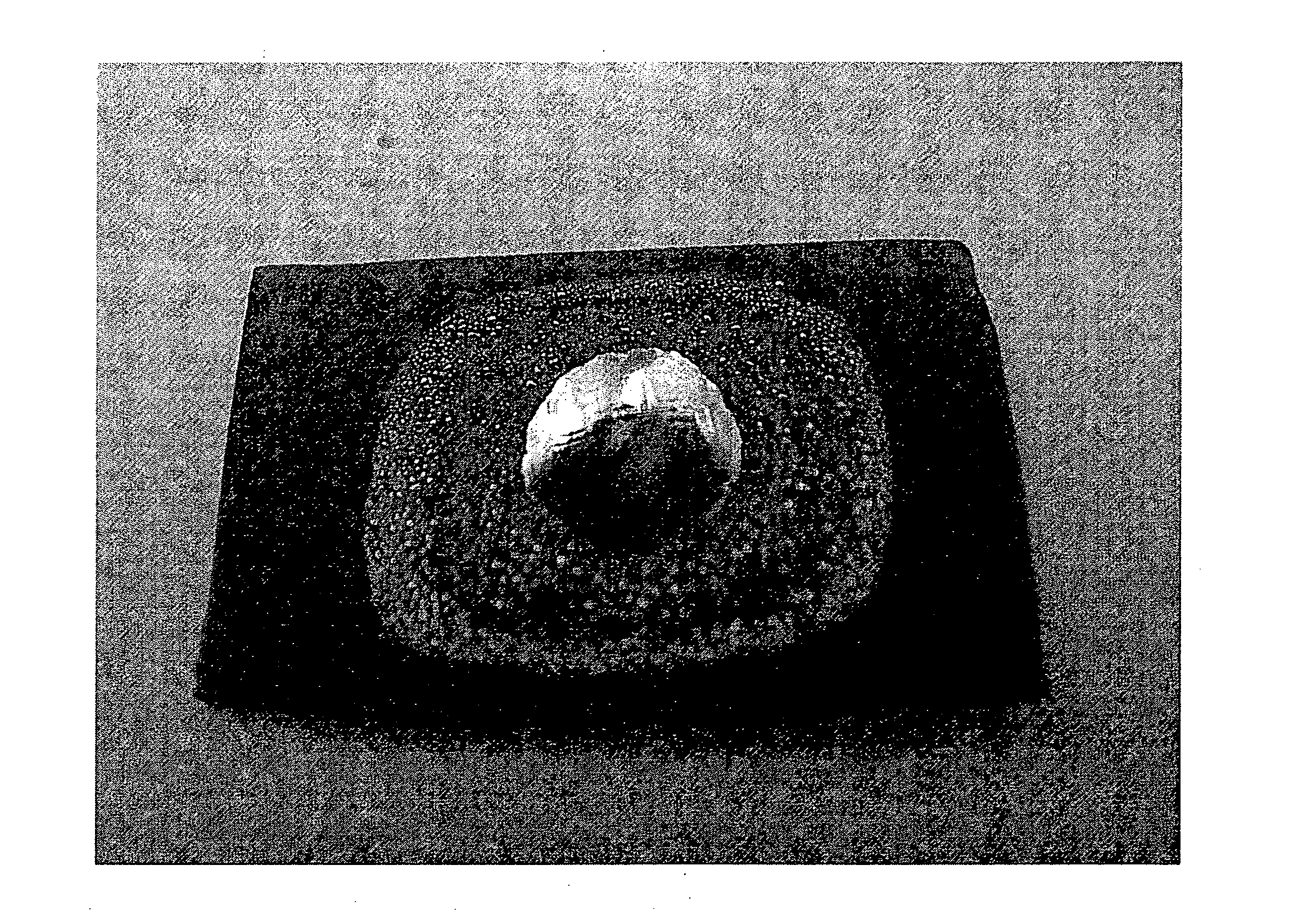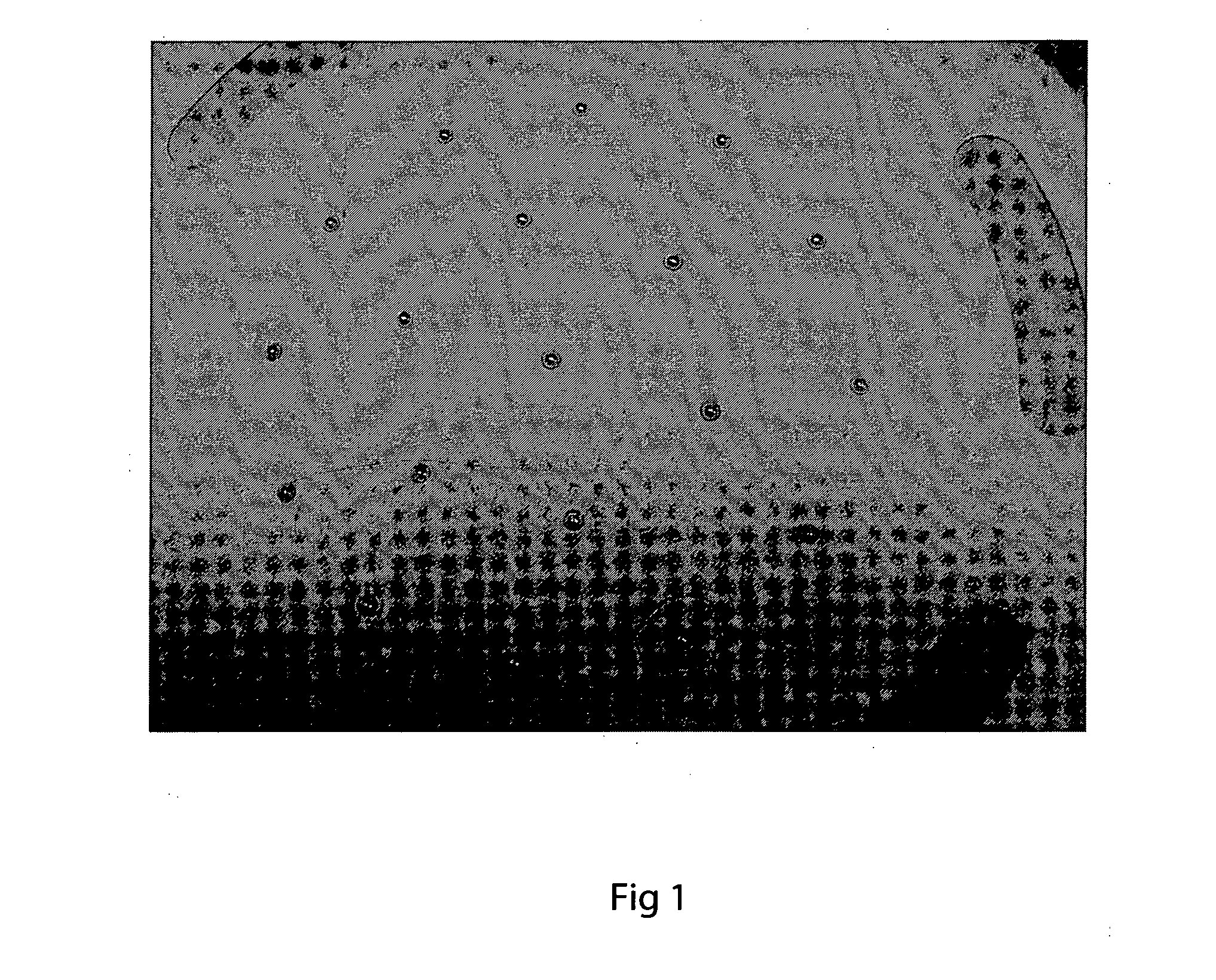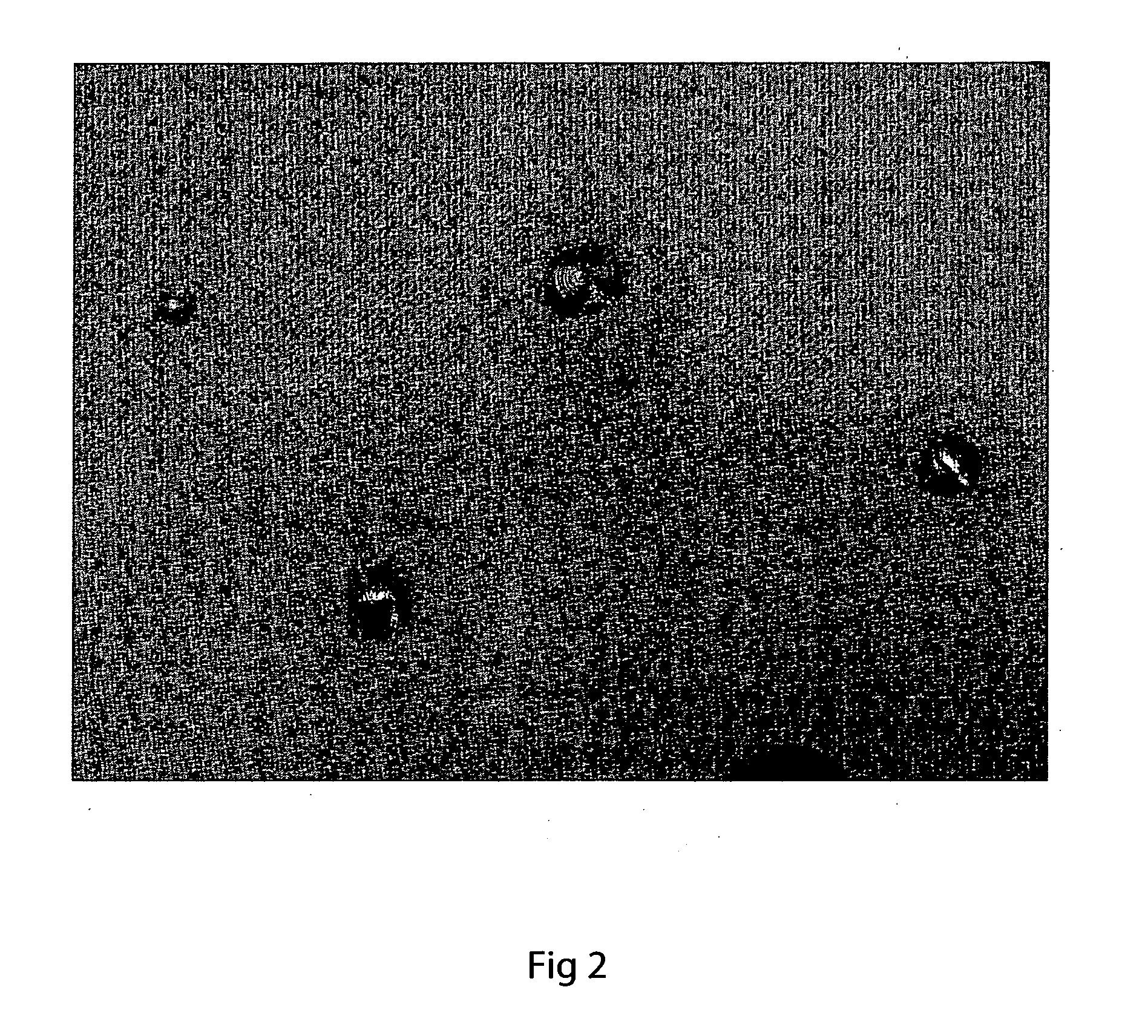Brazing process
a brazing process and process technology, applied in the field of joining, can solve the problems of limited use of ceramic components, weak joints at the joins of smaller parts, and large or complex ceramic components, and achieve the effect of reducing the porosity of the preform
- Summary
- Abstract
- Description
- Claims
- Application Information
AI Technical Summary
Benefits of technology
Problems solved by technology
Method used
Image
Examples
example 1
[0066]A powder of silver metal was mixed with Cerdec™80683 binder to form a slurry (in the absence of second metal). The silver particles were sized less than 44 μm. Small droplets of the slurry (about 0.1 ml) were placed on a ceramic oxide surface comprising yttria stabilised zirconia (YSZ).
[0067]The surface having the filler thereon was heated in air to about 970° C. until molten for a period of about 30 minutes. The surface was then cooled to room temperature. FIG. 1 shows the small beads of silver that result on the ceramic oxide surface. The beading of the silver indicates that the silver did not spread over or wet the ceramic surface under the heating conditions. Visual inspection shows that the silver was poorly bonded to the ceramic oxide surface.
[0068]Another YSZ surface having droplets of a filler comprising only silver thereon was heated in air to about 975° C. for a period of about 30 minutes (in the absence of a second metal). The surface was then cooled to room tempera...
example 2
[0069]In order to demonstrate that a second metal added to the filler can improve its ability to wet a ceramic oxide surface, a further powder comprising aluminium was added to the silver powder during preparation of the filler. The powder mixture comprised about 0.2 wt % of aluminium (not including the weight of the binder). The aluminium had an average particle size of 5 μm. The two powders (silver and aluminium) were mixed by stirring together with the binder to form a slurry. Stirring can be done by hand or by means of a mechanical stirrer.
[0070]Small droplets of about the same size as those of Example 1 were placed on the same type of ceramic oxide surface used in Example 1. The surface was heated in air to above the melting point of the silver (i.e. to 975° C.) for about 30 minutes and then cooled.
[0071]FIG. 3 shows that a filler comprising about 0.2 wt % aluminium has a decreased contact angle with the ceramic oxide surface (compared to the same filler in the absence of the a...
example 3
[0072]In order to demonstrate that another amount of a second metal added to the filler can improve the wettability of a ceramic oxide surface, 0.4 wt % of the aluminium powder was added to the silver powder during preparation of the filler. Using the same conditions as described in Example 2, except that the heating temperature was 970° C. (which difference is believed to be relatively inconsequential), the filler was melted on the YSZ ceramic surface and then cooled. The increased wettability of the filler on the ceramic oxide, due to the formation of aluminium oxide at the molten filler / vapour interface, is shown in FIG. 4. The cooled filler was well bonded to the ceramic oxide surface.
PUM
| Property | Measurement | Unit |
|---|---|---|
| Melting point | aaaaa | aaaaa |
| Particle diameter | aaaaa | aaaaa |
| Particle diameter | aaaaa | aaaaa |
Abstract
Description
Claims
Application Information
 Login to View More
Login to View More - R&D
- Intellectual Property
- Life Sciences
- Materials
- Tech Scout
- Unparalleled Data Quality
- Higher Quality Content
- 60% Fewer Hallucinations
Browse by: Latest US Patents, China's latest patents, Technical Efficacy Thesaurus, Application Domain, Technology Topic, Popular Technical Reports.
© 2025 PatSnap. All rights reserved.Legal|Privacy policy|Modern Slavery Act Transparency Statement|Sitemap|About US| Contact US: help@patsnap.com



